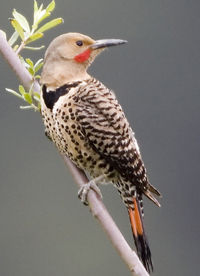No edit summary |
No edit summary |
||
| Line 1: | Line 1: | ||
{{115inprogress|December 12th, 2008}} | {{115inprogress|December 12th, 2008}} | ||
[[Image:Flicker1.jpg|thumb| | [[Image:Flicker1.jpg|thumb|200px|left|Northern Flicker]] | ||
== Introduction == | == Introduction == | ||
Revision as of 17:11, 29 October 2008

Introduction
In an attempt to replenish wildlife populations that have been dissolving do to human development, the United Indian Health Services' Potawot Health Village has put much effort into creating suitable habitats for many animal species. To do this, many topographical changes have been made to the land. Once just flat land, Potawot health village has been transformed into an area with various flat pastures, berms, islands, orchards, and wetlands.
Indicator Species
In an attempt to monitor the wildlife populations, the United Indian Health Services uses birds as indicator species, more easily monitored species who can, by their numbers, help us understand what other animals directly related to the indicator species. For example, by noticing increases in raptors, such as Kites, one can induce that the population of shrews, an important prey of the raptor, must be increasing. Another example might be the increasing number of woodpeckers, such as the northern flicker, which indicates increasing health among insect populations.